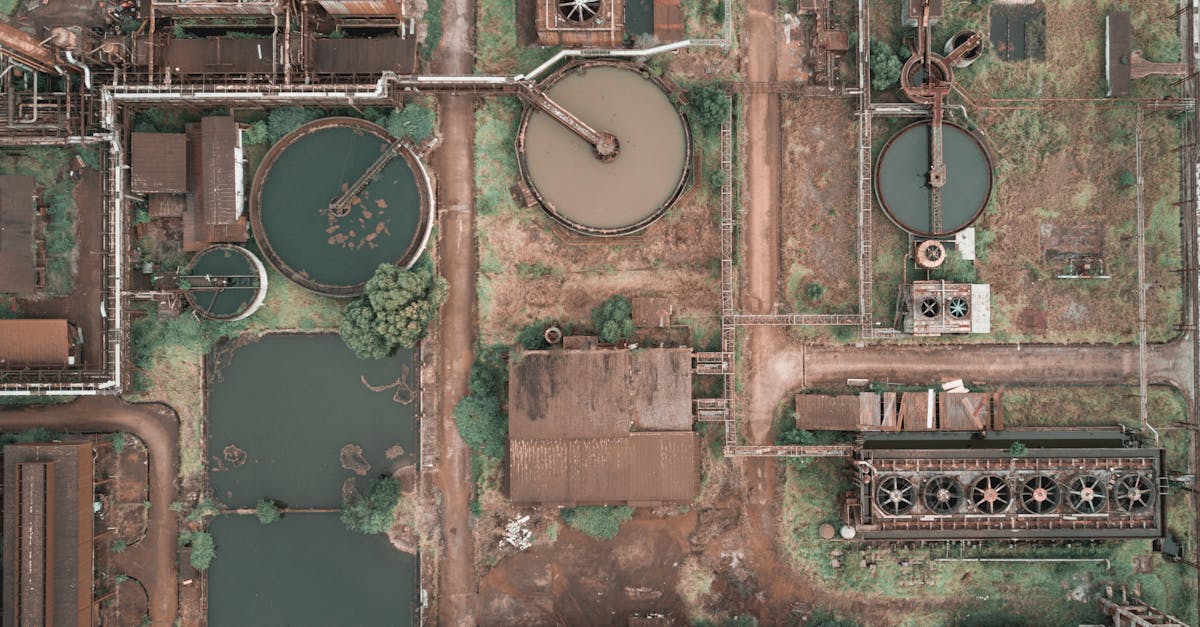Constructing Tomorrow: Pioneering Sustainable Practices in Modern Construction

Welcome to the forefront of sustainable innovation in construction! As our world evolves, so does the need for sustainable practices in all industries, especially construction. This article uncovers the latest trends and innovations that are reshaping the construction sector, placing a strong emphasis on environmental responsibility, resource efficiency, and community well-being. With groundbreaking developments in materials, technology, waste reduction, climate-resilient design, and community engagement, the construction industry is undergoing a transformative journey towards a more sustainable future. Join us as we delve into the dynamic world of construction sustainability and explore the game-changing initiatives that are redefining the way we build for tomorrow.
1. Introduction: Understanding Sustainable Construction
Thank you for reading this post, don't forget to subscribe!
Welcome to the fascinating world of sustainable construction! Sustainable construction involves designing and building with consideration for environmental, social, and economic impact. It’s all about creating structures and using processes that are responsible, resource-efficient, and environmentally friendly, ultimately contributing to the well-being of both people and the planet. In today’s rapidly evolving construction industry, the importance of sustainable practices is paramount. With a rising global awareness of environmental issues, there’s a significant shift towards integrating sustainable construction methods and materials. This not only helps reduce the carbon footprint but also ensures the longevity and resilience of our built environment for generations to come.
Defining Sustainable Construction
Sustainable construction is more than just a trend; it’s a fundamental shift in the way we approach building for the future. Essentially, sustainable construction entails designing, constructing, and operating buildings in a way that uses resources efficiently, minimizes the impact on the environment, and creates healthy and vibrant spaces for people. By choosing eco-friendly materials, optimizing energy use, and managing waste effectively, sustainable construction aims to reduce the environmental footprint of buildings and infrastructure. This approach not only addresses the pressing need to combat climate change but also contributes to improving the overall quality of life for communities and individuals. Embracing sustainable construction practices means considering the entire life cycle of a building, from design and construction to operation and eventual removal, with a focus on long-term environmental and social benefits.
Importance in Today’s Industry
Sustainable practices in construction have gained increasing importance in today’s industry, and for good reason. Not only do these practices contribute to a healthier planet, but they also offer a myriad of benefits across the board. One of the key advantages is the significant reduction of environmental impact. By embracing sustainable methods, construction can minimize waste, reduce energy consumption, and lower carbon emissions, leading to a more eco-friendly and sustainable industry. Moreover, sustainable construction practices often result in cost savings for builders, developers, and homeowners. Through the use of energy-efficient materials, renewable energy sources, and innovative technologies, long-term operational and maintenance costs can be substantially reduced, making sustainable construction both economically and environmentally favorable. Furthermore, adopting sustainable practices can enhance the overall quality of buildings, creating healthier and more comfortable living and working environments for occupants. This not only supports the well-being of individuals but also adds value to properties, contributing to a positive societal and economic impact.
2. Innovative Materials: Pioneering Eco-friendly Alternatives

When it comes to sustainable construction, innovative materials are at the forefront, paving the way for eco-friendly alternatives that redefine how we build. Bamboo and hemp are emerging as sustainable superstar materials due to their rapid growth, strength, and versatility. These materials are not only renewable but also offer incredible resilience, making them ideal for a wide range of construction applications. Additionally, the use of recycled plastic and glass is reshaping the construction landscape, offering a second life to materials that would otherwise end up in landfills. By incorporating these recycled materials into construction, the industry is not only reducing waste but also embracing a circular approach that minimizes environmental impact. As the demand for sustainable construction materials continues to rise, the industry is witnessing an exciting shift towards embracing these pioneering eco-friendly alternatives, setting the stage for a more environmentally responsible and resource-efficient approach to building.
Bamboo and Hemp: Sustainable Alternatives
Bamboo and hemp are leading the charge as sustainable alternatives in the construction industry, offering a multitude of benefits that reframe the way we build. Bamboo, known for its remarkable strength and rapid growth, is emerging as a go-to choice for sustainable construction. Its versatility allows it to be used in various applications, from structural elements to finishing details, offering a renewable and sturdy alternative to traditional building materials. Similarly, hemp is gaining attention for its eco-friendly properties, serving as an excellent option for insulation, fiberboard, and even sustainable concrete. As a fast-growing plant, hemp replenishes quickly and requires minimal resources, making it a highly sustainable and versatile building material. Both bamboo and hemp embody the essence of sustainability, providing construction projects with durable and environmentally responsible options that reduce the industry’s ecological footprint. As the world shifts towards embracing more eco-conscious building practices, these materials are set to play a pivotal role in shaping the future of sustainable construction.
Recycled Plastic and Glass: Redefining Utilization
The innovative use of recycled plastic and glass is reshaping the construction landscape, offering sustainable solutions that reimagine the industry’s approach to material utilization. Recycled plastic, often sourced from post-consumer waste, is undergoing a transformation as it finds its way into construction materials. From composite lumber to insulation and even structural elements, recycled plastic presents a durable and eco-friendly alternative that reduces the burden on landfills while promoting a circular economy within the construction domain. Similarly, recycled glass, with its unique properties, is increasingly finding applications in construction. Beyond traditional usage in glass aggregates, recycled glass is now being used in various construction materials, such as countertops, tiles, and fiberglass insulation. By integrating recycled plastic and glass into construction, the industry is taking significant strides towards sustainability, offering versatile, high-performance materials while reducing the environmental impact associated with traditional manufacturing processes.
3. Green Technology Adoption: Transforming Building Systems
The integration of green technology is revolutionizing building systems, ushering in a new era of sustainable construction that prioritizes energy efficiency, environmental responsibility, and enhanced performance. Smart building systems, empowered by the Internet of Things (IoT) and artificial intelligence (AI), are optimizing energy usage and operational efficiency within structures. These systems enable real-time monitoring and adaptive controls, allowing buildings to dynamically respond to changing environmental conditions, ultimately reducing energy waste and operational costs. Additionally, the widespread adoption of renewable energy solutions, including solar, wind, and geothermal technologies, is reshaping the energy landscape in construction. By harnessing the power of natural, abundant resources, buildings can significantly reduce their reliance on traditional energy sources, lowering their carbon footprint and operating expenses. As the construction industry embraces these cutting-edge innovations, buildings are not only becoming more environmentally sustainable but also more economically viable, setting new standards for energy-efficient and environmentally responsible design and operations. These advancements are propelling the industry towards a greener future, where buildings are not just structures, but living, breathing entities that actively contribute to conservation and efficiency.
Smart Building Systems
Smart building systems represent an innovative leap in construction, integrating the power of the Internet of Things (IoT) and artificial intelligence (AI) to revolutionize energy usage and building performance. These systems offer a dynamic approach to monitoring, controlling, and optimizing various building functions in real time. IoT sensors collect data on energy consumption, occupancy patterns, and environmental conditions, providing valuable insights for efficient decision-making. AI algorithms then analyze this data to predict and optimize energy usage and building operations, resulting in significant resource savings and improved occupant comfort. By dynamically adjusting lighting, heating, and cooling based on real-time demand, smart building systems play a pivotal role in reducing energy waste and operational costs while enhancing overall building performance. As the deployment of smart building systems becomes more widespread, the construction industry is witnessing a fundamental shift towards buildings that operate with heightened efficiency, intelligence, and environmental responsibility, setting new benchmarks for sustainable and technologically advanced structures.
Renewable Energy Solutions
The widespread implementation of renewable energy solutions, such as solar, wind, and geothermal energy, is revolutionizing construction projects, ushering in an era of sustainable and eco-friendly energy sources. Solar energy, harnessed through photovoltaic panels, is a prominent feature in modern construction, providing a clean and renewable power source that reduces reliance on traditional grid electricity. The integration of wind energy, often through wind turbines, contributes to sustainable energy generation, particularly in areas with consistent wind patterns. Furthermore, geothermal energy, derived from harnessing heat from the Earth’s core, offers a reliable and constant energy source, especially for heating and cooling systems in buildings. By embracing these renewable energy solutions, construction projects are not only reducing their carbon footprint but also benefiting from long-term cost savings and energy independence. The utilization of solar, wind, and geothermal energy is a testament to the construction industry’s commitment to sustainability, and as these technologies continue to advance, they hold the promise of reshaping the energy landscape, paving the way for a greener and more sustainable future.
4. Zero Waste Initiatives: Redefining Construction Practices

Zero waste initiatives are redefining construction practices by focusing on reducing waste and promoting circularity within construction processes. These initiatives encompass a range of strategies aimed at minimizing waste generation, repurposing materials, and embracing a more sustainable approach to construction. One key initiative involves the adoption of prefabrication and modular construction, which allows for greater precision in material usage, reducing onsite waste and optimizing resource utilization. Additionally, waste recycling and reuse initiatives are gaining prominence, ensuring that materials are diverted from landfills and instead repurposed in innovative ways, demonstrating the industry’s commitment to circularity and environmental stewardship. By embracing these zero waste initiatives, the construction sector is not only reducing its environmental impact but also fostering a more resource-efficient and sustainable approach to building, setting new standards for responsible construction practices.
Prefabrication and Modular Construction
Prefabrication and modular construction offer a transformative approach that minimizes construction waste while maximizing efficiency and quality. Through prefabrication, components are built off-site in controlled environments, significantly reducing material waste and minimizing the environmental impact on construction sites. Additionally, the process allows for precise measurement and planning, leading to optimized material usage and decreased instances of onsite errors. Modular construction further contributes to waste reduction by streamlining assembly, allowing for the reuse of modules in different projects, and reducing the need for excessive raw materials. By embracing prefabrication and modular construction, the construction industry is fostering a sustainable and resource-efficient methodology that not only minimizes waste but also accelerates project timelines, enhances cost-effectiveness, and elevates overall construction quality.
Waste Recycling and Reuse
In the construction industry, innovative methods for recycling and reusing construction waste are playing a vital role in minimizing environmental impact. Construction waste, including materials like concrete, wood, and metal, can be repurposed through advanced recycling techniques, thereby reducing the burden on landfills and minimizing resource depletion. For instance, concrete waste can be crushed and reused as aggregate for new construction projects, while scrap wood can be repurposed for various applications, such as landscaping or wood composite products. Additionally, metal waste can be salvaged, melted down, and used in the manufacture of new construction materials, supporting a circular economy approach within the industry. By highlighting these innovative methods for recycling and reusing construction waste, the construction sector is demonstrating a commitment to environmental responsibility and sustainable practices, setting the stage for a greener and more resource-efficient approach to building.
5. Resilient Design and Adaptation: Addressing Climate Challenges
Resilient design and adaptation in construction play a crucial role in addressing the challenges posed by a changing climate. Faced with the increasing threats of extreme weather events and rising sea levels, the construction industry is embracing strategic design approaches and practices that enhance building resilience. These approaches include designing structures with climate-resistant materials and implementing flood-resistant design strategies to mitigate the impacts of floods and storm surges. Additionally, architectural innovations such as green roofs, which absorb rainwater and provide insulation, are becoming more prevalent in resilient design, offering sustainable solutions to combat climate challenges. By exploring and integrating resilient design and adaptation, the construction sector is not only preparing for the effects of climate change but also leading the way in creating buildings that can withstand and adapt to the evolving environmental conditions.
Climate-Responsive Building Design
Climate-responsive building design encompasses a range of architectural strategies that effectively mitigate climate-related risks and enhance building resilience. By adopting passive design features such as strategic orientation, natural ventilation, and shading elements, architects and builders can minimize the impact of extreme weather conditions while enhancing energy efficiency. Furthermore, the use of high-performance building materials and advanced insulation solutions contributes to maintaining indoor comfort levels and reducing the reliance on active heating and cooling systems, thereby increasing a building’s resilience to climate variations. Sustainable landscaping and the integration of green spaces also play a significant role in climate-responsive design, offering natural cooling effects, stormwater management, and biodiversity promotion. Understanding and implementing these architectural strategies not only ensure climate adaptability but also contribute to the overall well-being of occupants and the surrounding environment, fostering a harmonious relationship between built structures and nature.
Adaptive Reuse of Structures
The trend of adaptive reuse of structures marks an exciting shift in the construction industry, representing a sustainable approach that reduces material consumption and promotes environmental responsibility. This practice involves repurposing existing buildings for new functions, breathing new life into old structures and minimizing the need for extensive new construction. Adaptive reuse not only preserves the historical and architectural significance of the original structures but also significantly reduces the environmental impact associated with demolition and new construction. Moreover, this approach fosters a sense of community and cultural continuity, as repurposed buildings often retain a connection to their past while serving modern needs. By highlighting the trend of adaptive reuse, the construction sector is championing a more sustainable and resource-conscious approach, demonstrating that existing structures can be transformed creatively to meet contemporary demands while contributing to a greener and more environmentally responsible built environment.
6. Collaborative Initiatives: Building Sustainable Communities
Collaborative efforts and community-driven projects within the construction sector are shaping sustainable development and fostering a sense of social responsibility. Through partnerships between industry stakeholders, local communities, and government bodies, sustainable construction initiatives aim to address diverse societal and environmental needs. These initiatives often involve engaging local communities in the design and construction processes, ensuring that projects reflect the unique cultural and environmental characteristics of the area. Furthermore, community-driven sustainable development projects prioritize social equity, diversity, and inclusion, harnessing the collective wisdom and creativity of diverse voices to build structures that serve the community’s best interests. By discovering and embracing these collaborative initiatives, the construction sector is actively investing in the long-term well-being of communities, fostering a sense of ownership and pride while contributing to a more sustainable and harmonious future.
Community Engagement Strategies
Community engagement lies at the heart of sustainable construction projects, with a strong focus on involving and empowering local communities. By actively involving community members in the planning, design, and execution of construction projects, sustainable initiatives ensure that the built environment resonates with the community’s needs and values. This involvement fosters a sense of ownership and pride, creating spaces that reflect the community’s identity and contribute positively to its well-being. Moreover, community engagement strategies in sustainable construction projects prioritize open communication, collaboration, and education, enabling community members to understand the environmental and social impact of the projects and encouraging their participation in sustainable practices. By examining the dynamics of community engagement in sustainable construction, we can celebrate the unifying power of inclusivity and cooperation, fostering a shared commitment to creating spaces that inspire, support, and empower the communities they serve.
Social Impact and Equity
In the realm of construction sustainability, initiatives focusing on social impact and equity prioritize fostering environments that embrace diversity, equity, and inclusion. By embracing these initiatives, construction sustainability programs aim to create spaces that foster a sense of belonging, unity, and opportunity for all. Embracing diversity brings forth varied perspectives and experiences, fostering innovative solutions while ensuring that the built environment serves the needs of all individuals. Furthermore, programs centered on social equity prioritize the fair distribution of benefits, opportunities, and resources within the construction industry, ensuring that sustainable practices uplift and support diverse communities. By highlighting these initiatives, we celebrate the power of construction to be a force for positive societal change, setting a precedent for a more inclusive and socially conscious approach to building and development.




